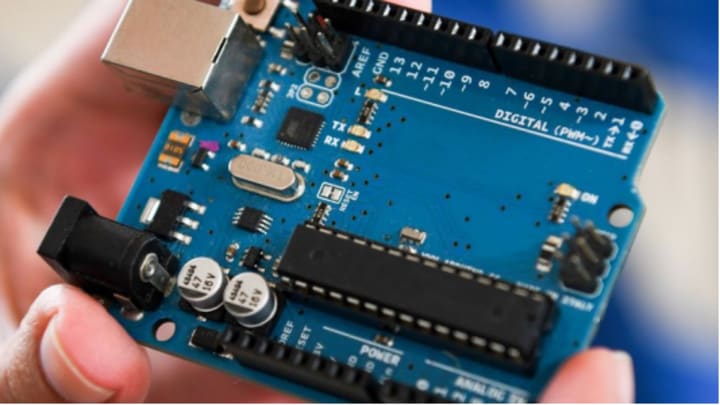MCU Pairing Simplifies Voice Control Interface Design
MCU Pairing Simplifies Voice Control Interface Design

Microcontroller Units (MCUs) have revolutionized the realm of embedded systems by integrating a processor, memory, and input/output peripherals on a single chip. These compact yet powerful devices are pivotal in managing specific operations across a diverse array of applications, from automotive systems and home appliances to medical devices and industrial automation. The versatility and cost-effectiveness of MCUs have made them indispensable in modern electronics, simplifying system design and enhancing reliability.
What is MCU
An MCU, or Microcontroller Unit, is an integrated circuit designed to manage specific operations within an embedded system. A typical MCU includes a processor, memory, and input/output peripherals all on a single chip. The processor (CPU) executes instructions and performs calculations, the memory consists of non-volatile storage (such as ROM/Flash) for firmware and volatile storage (such as RAM) for temporary data, and the input/output peripherals facilitate interaction with other devices.

MCUs are widely used in various applications including automotive systems, medical devices, consumer electronics, and industrial automation. They are chosen for their efficiency and cost-effectiveness in handling specific tasks. By integrating multiple functions onto a single chip, MCUs simplify system design and enhance reliability.
Popular MCU Application
Automotive Systems: Engine control units (ECUs), airbag systems, anti-lock braking systems (ABS), and infotainment systems.
Home Appliances: Washing machines, microwave ovens, refrigerators, and smart thermostats.
Consumer Electronics: Smartphones, wearable devices (such as smartwatches), remote controls, and gaming consoles.
Industrial Automation: Programmable logic controllers (PLCs), robotics, process control, and motor control systems.
Medical Devices: Blood glucose meters, heart rate monitors, insulin pumps, and portable diagnostic equipment.
Smart Home Devices: Home security systems, smart lighting, smart locks, and home automation hubs.
Communications: Routers, modems, wireless sensors, and network switches.
Toys and Entertainment: Electronic toys, drones, and virtual reality (VR) controllers.
New Improvement of MCU Application
STMicroelectronics is combining its STM32 microcontroller (MCU) hardware and software with Sensory’s voice control technology to simplify the development of voice-based user interfaces in wearables, Internet of Things (IoT), and smart home applications.
While Sensory has worked hand in hand with STMicroelectronics to create a complete software, hardware, and licensing package for embedded voice recognition on STM32 microcontrollers and make adding voice interfaces simple.
It will also enable design engineers to deploy artificial intelligence (AI)-centric edge voice without programming, data science, and machine learning expertise. Users can run the STM32Cube expansion package on a high-performance STM32H7 microcontroller to host voice models while leveraging the MCU’s rich on-chip memory resources.
This new solution enables design engineers to develop and prototype intuitive voice-based user interfaces for a wide range of smart embedded products. It also allows designers to take advantage of the STM32Cube software ecosystem as well as Sensory’s new VoiceHub online portal.
Conclusion
The continuous evolution of MCU applications is further exemplified by the recent advancements from STMicroelectronics and Sensory. By integrating voice control technology with STM32 microcontrollers, they are paving the way for the development of sophisticated, intuitive voice-based user interfaces in wearables, IoT, and smart home applications.
This innovative solution not only streamlines the development process for design engineers but also leverages the extensive STM32Cube software ecosystem, enabling the creation of AI-centric edge voice interfaces without the need for extensive programming or data science expertise. As a result, MCUs are poised to drive the next wave of innovation in smart embedded products, further solidifying their role as the backbone of modern electronic systems.
FAQs
What role does Sensory’s VoiceHub online portal play in this solution?
Sensory’s VoiceHub online portal provides tools and resources for developing and prototyping voice-based user interfaces. It complements the STM32Cube software ecosystem, offering an intuitive platform for creating and testing voice recognition models.
What is the main benefit of pairing STM32 microcontrollers with Sensory’s voice control technology?
The primary benefit is the simplification of developing voice-based user interfaces for wearables, IoT, and smart home applications. This pairing allows design engineers to easily integrate voice recognition capabilities into their products without needing extensive programming or data science expertise.
How does this solution impact the overall development process of smart embedded products?
This solution significantly streamlines the development process by providing an integrated package that includes both hardware and software components. It reduces the complexity and time required to develop voice-based interfaces, enabling faster prototyping and deployment of smart embedded products.
About the Creator
Enjoyed the story? Support the Creator.
Subscribe for free to receive all their stories in your feed. You could also pledge your support or give them a one-off tip, letting them know you appreciate their work.





Comments
There are no comments for this story
Be the first to respond and start the conversation.